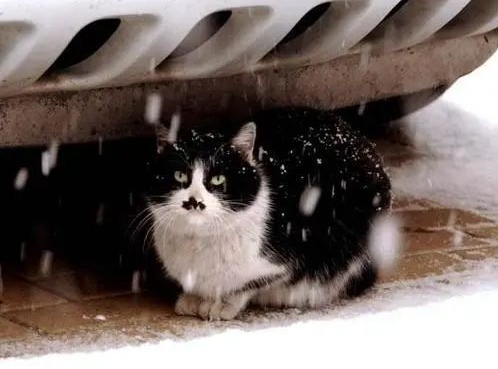Are you a torn pooper scooper when it comes to getting your pet on birth control?
Pet birth control is, indeed, a topic of much debate.
Some people say it’s good to put pets on birth control, others say it’s bad.

The public says it’s reasonable, the public says it’s reasonable.
Whether it’s good or not is cloudy.
And so wrestle with this unsolvable proposition.
Quickly let me help you analyze the N number of claims about pet birth control and whether they are reliable or not.
Divide these legendary claims into pros and consToday, let’s analyze some of the claims about the benefits of birth control.
the
Argument 1: Breeding control to reduce the number of stray animals
This may sound like it has nothing to do with our family pets, and our pets don’t stray.
This is a social problem, and of course, the greater the number of cats and dogs, the greater the number of stray cats and dogs.

Dogs and cats are polygamous animals that reproduce well and can produce a significant amount in one litter.
For domestic pets, if you don’t want your furry child to be a mom or dad, and you can protect him outside from having babies with other furry children, then this is one you can actually ignore.
Claim 2: Preventing loss, fights, temper tantrums, nuisances
Dogs will go into heat every 4-6 months
Each estrous period lasts 6 to 14 days
The estrous cycle of cats is about 3 to 4 times a year.
Each heat lasts about a week or ten days
That’s right, wandering off, fighting, temper tantrums, and disturbances are allThe catalytic effect of the hairy children’s hormones。
Cats abound who jump out of windows and through doors when their owners are not looking because they are in heat, and their thoughts of the opposite sex do not allow them to be suffocated inside.
Wailing in the dead of night, you don’t care maybe the neighbors will mind.

Male dogs will fight their love rivals for the dog girl of their choice, thus causing disputes between owners.
Alas, this is the pain of lovesickness.
We humans are advanced animals and have self-control over our emotions, but cats and dogs simply can’t do that.
Dog behavior during estrus:
Stirring and restlessness, loss of appetite, etc.
Bitches also have swollen, flabby peaches.
and bleeding from the vulva
You’ll be quite weak.
Decreased resistance
Cat behavior during estrus:
Female cats “butt-cheeking,” “rolling around,” and “rubbing their heads.”
Male cat howling, to squeezing urine to dominate the territory
How often do these phenomena occur? What frequency?
dogThey come into heat every 4-6 months.
Each estrous period lasts 6 to 14 days
kittyThe estrous cycle is about 3 to 4 times a year
Each heat lasts about a week or ten days
Let’s see if you can take it.
Claim 3: For female dogs and cats, it reduces the chance of breast cancer.
The answer to this is yes. Word of mouth, here is a set of data from a pet organization:
Breast cancer is the most common cancer in female dogs (3.4% chance of developing it) and the third most common cancer in female cats (2.5% chance of developing it).
There is a 50.9% chance that mammary cancer is malignant in female dogs and 90% malignant in female cats.
Unspayed bitches and cats are seven times more likely to develop breast cancer than spayed ones.

Spayed bitches before the first heat are 0.005:1 more likely to develop the disease than unspayed bitches.
The chances of sterilization after the first heat are 8 percent
Chances of sterilization after the second heat are 26%
Even if you get spayed or neutered at age 9, the chances of getting it are much less.
Considering the high chances of breast cancer and the possibility of malignancy, sterilization is very beneficial.
Not only does it reduce the incidence of breast cancer, but sterilization also minimizes the risk of developing uterine pus, which may occur in the uterine stump only in very rare cases.
15.2% of unspayed bitches will have uterine sepsis by 4 years of age
23% to 24% will have the disease by age 10

The mortality rate for uterine sepsis is up to 17% in female dogs and 8% in female cats.
Uterine pus is a common gynecological condition in terms of percentage chance of prevalence. It is a blessing to be able to reduce the incidence.
Claim 4: Can prolong life
To date, there are no scientific studies that show that neutering cats extends life.
And it’s something that seems to never be proven.
With the same cat, you have no way of knowing if it will live longer unneutered or neutered because there is no frame of reference to use for comparison.
Someone once compared two different cats, one neutered and one unneutered.
As it turned out, the neutered cat, lived 12 years and the unneutered cat lived 8 years.
This concludes that neutered cats live 40% longer than unneutered cats.
It’s really not that comparison!
It’s like two oldest gentlemen, one smoked and lived to be 80, one didn’t smoke and lived to be 70.
And then you can say that smoking extends the life of the oldest man by 10 years??
Even comparing the lifespan of all neutered cats to un-neutered cats is not scientific.

Each cat has different breeds, physical qualities, feeding styles, and living environments, which can greatly affect the results of the comparisons.
So, you should know if the claim that birth control extends life is reliable or not.

